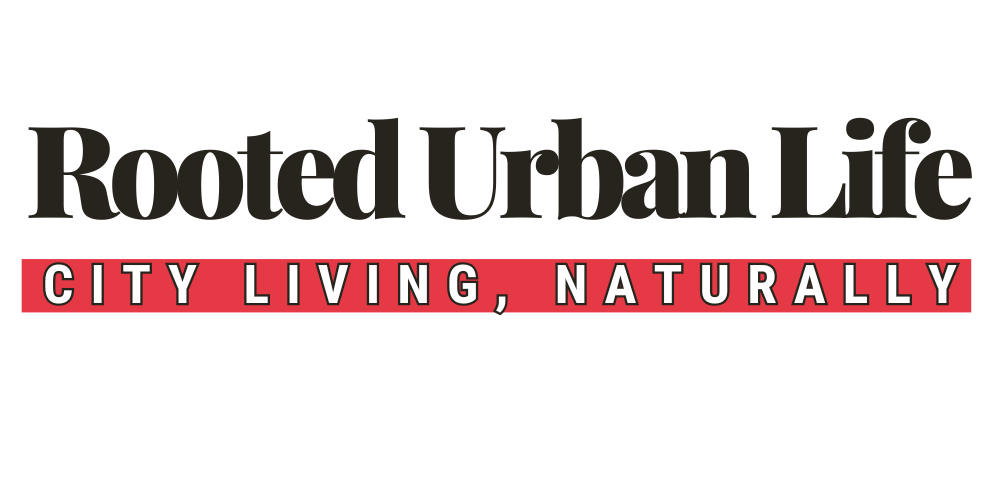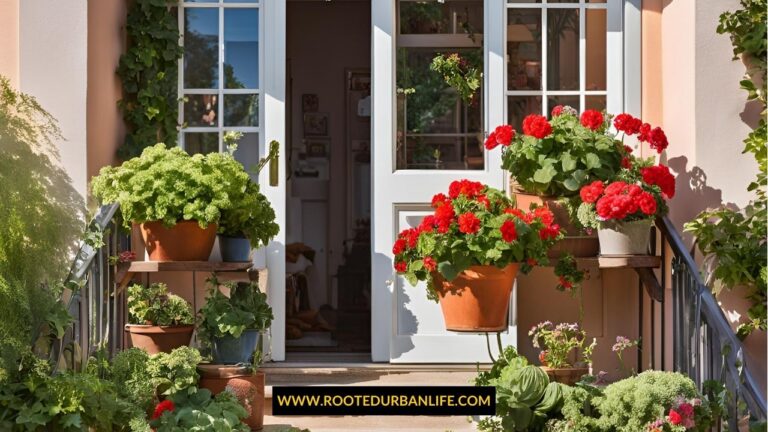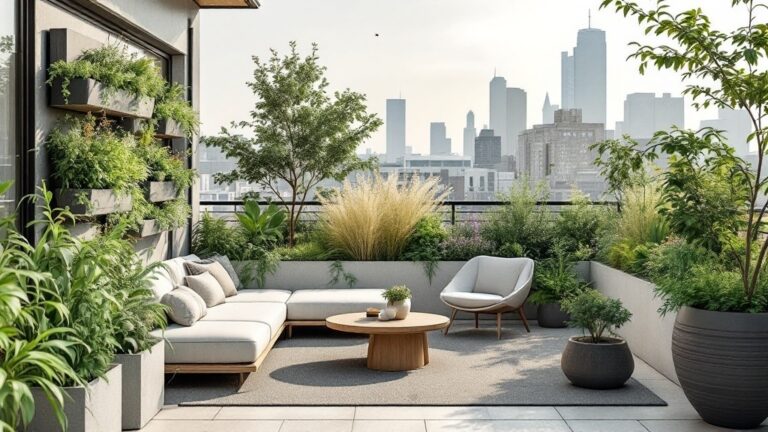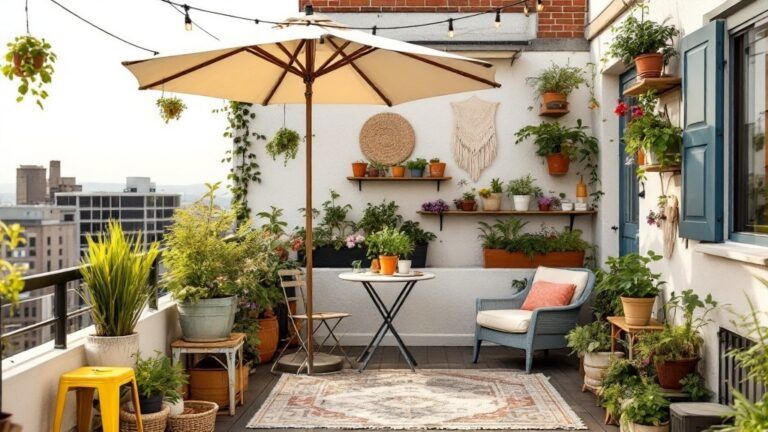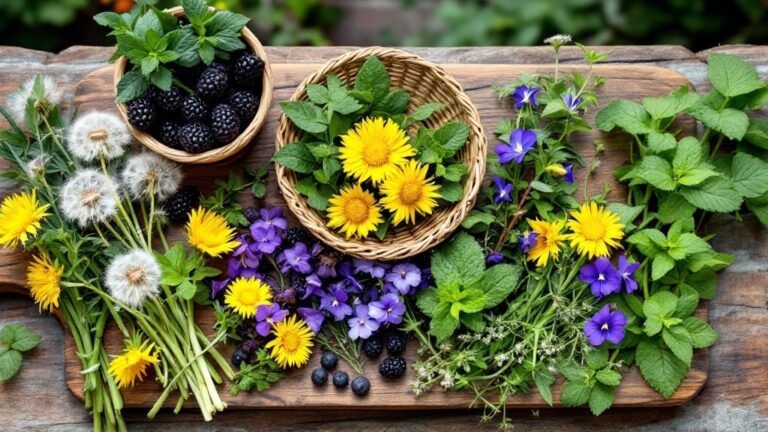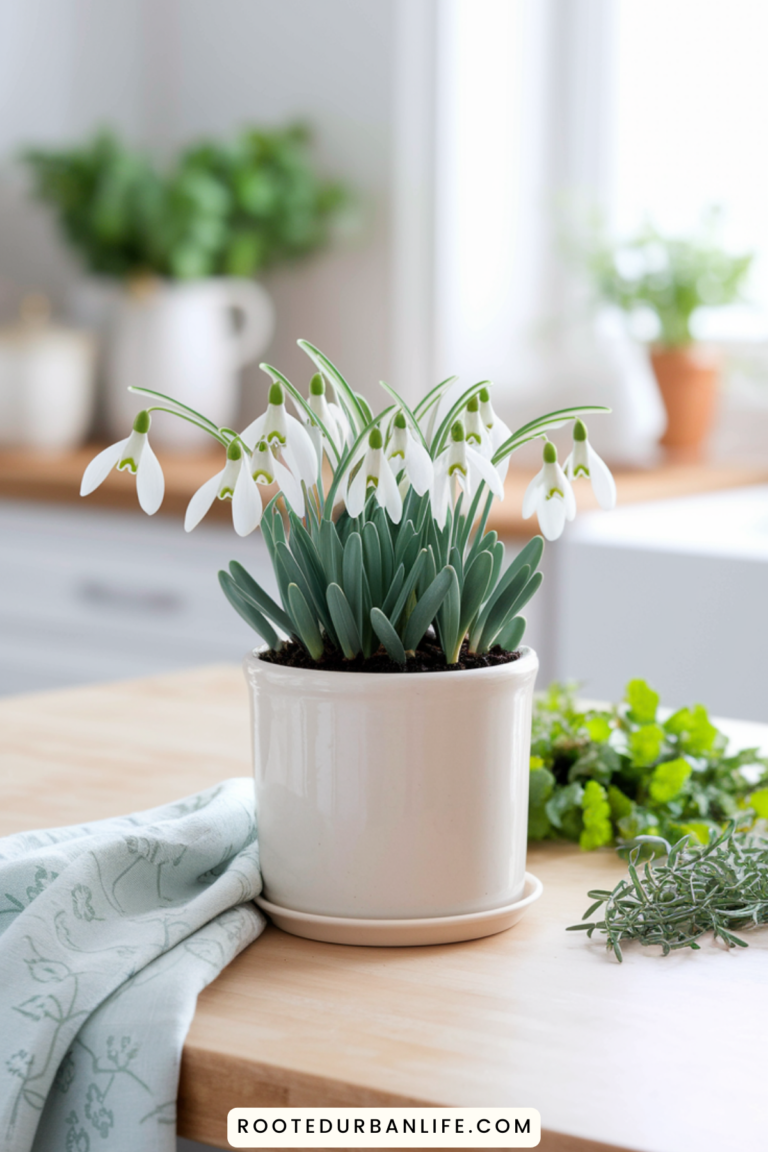Supercharge Your Indoor Seed Starting: Innovative Alternatives to Traditional Soil
Transform your seedling success rate with growing mediums that outperform conventional potting mix
Challenge Starting seeds indoors should be straightforward, but many gardeners struggle with traditional soil mixes that compact easily, harbor fungal diseases, and provide inconsistent moisture. If you’ve watched promising seedlings suddenly wilt, develop fuzzy mold, or simply fail to thrive despite your best efforts, you’re not alone.
What you will learn: In this guide you find out why alternative mediums often outperform traditional soil for indoor seed starting and how to create custom growing environments for different plant families. We will be sharing step-by-step recipes for making your own superior seed starting mixes and troubleshooting techniques specific to non-soil mediums.
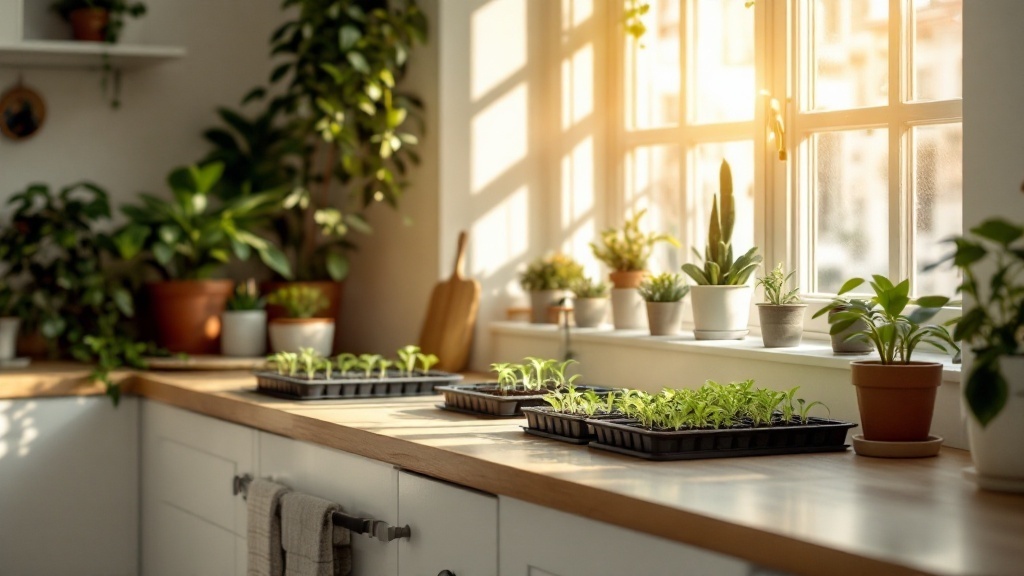
| Disclosure: If you shop from my article or make a purchase through one of my links, I may receive commissions on some of the products I recommend at no additional cost to you. |
The Science of Medium Density: Why It Matters More Than You Think
Many gardeners focus exclusively on nutrients when choosing a growing medium, overlooking the critical factor of density. The spaces between particles in your medium—known as porosity—directly impact how well your seeds can access both water and oxygen.
Practical Implementation:
- Assess your current medium by performing the squeeze test: grab a handful and squeeze it gently. It should hold shape but crumble easily when poked.
- Understand your seed types: larger seeds generally prefer looser mediums while tiny seeds need finer textures for good contact.
- Consider your watering habits: if you tend to overwater, choose mediums with more drainage components.
- Match medium density to your containers: deeper containers benefit from airier mixes.
Difficulty: Easy | Time: 10 minutes | Space: Minimal
Pro Tip: I’ve found that the ideal seed starting medium should hold approximately 30% air even when fully saturated with water. This prevents the anaerobic conditions that lead to damping off disease.
Medium Density Troubleshooting:
| Problem | Symptoms | Solution |
|---|---|---|
| Too dense | Slow germination, surface mold | Add more perlite or vermiculite |
| Too loose | Seeds dry out quickly, poor contact | Add coir or fine compost |
| Uneven moisture | Patchy germination | Mix components more thoroughly |
| Brought to you by rootedurbanlife.com | ||
Essential Tool: A reliable moisture meter helps you understand exactly what’s happening beneath the surface of your growing medium.
Coconut Coir Revolution: The Sustainable Powerhouse
Coconut coir—the fibrous material between the shell and outer coating of coconuts—has revolutionized indoor seed starting. Unlike peat moss, which takes centuries to form in fragile bog ecosystems, coir is a renewable byproduct of coconut processing.
Practical Implementation:
- Purchase compressed coir bricks (they expand dramatically with water).
- Rehydrate in a large container using warm water (approximately 5-6 times the brick volume).
- Allow to expand fully (15-30 minutes), breaking apart any chunks.
- Adjust pH if necessary (coir is typically neutral to slightly acidic at 5.8-6.8 pH).
- Use alone or mix with other components for custom blends.
Difficulty: Easy | Time: 30 minutes | Space: Medium
Pro Tip: I’ve discovered that rinsing coir with fresh water before use helps remove excess salts that can sometimes be present from processing, especially important for sensitive seedlings.
Coconut Coir Comparison:
| Feature | Coir | Peat Moss | Potting Soil |
|---|---|---|---|
| Water retention | Excellent | Good | Variable |
| Rewetting ability | Excellent | Poor | Moderate |
| pH | Neutral (5.8-6.8) | Acidic (3.8-4.5) | Variable |
| Sustainability | Renewable | Non-renewable | Varies |
| Disease resistance | High | Moderate | Low |
| Brought to you by rootedurbanlife.com | |||
Essential Tool: These space-saving coconut coir bricks expand to several times their size, making storage efficient for urban gardeners.
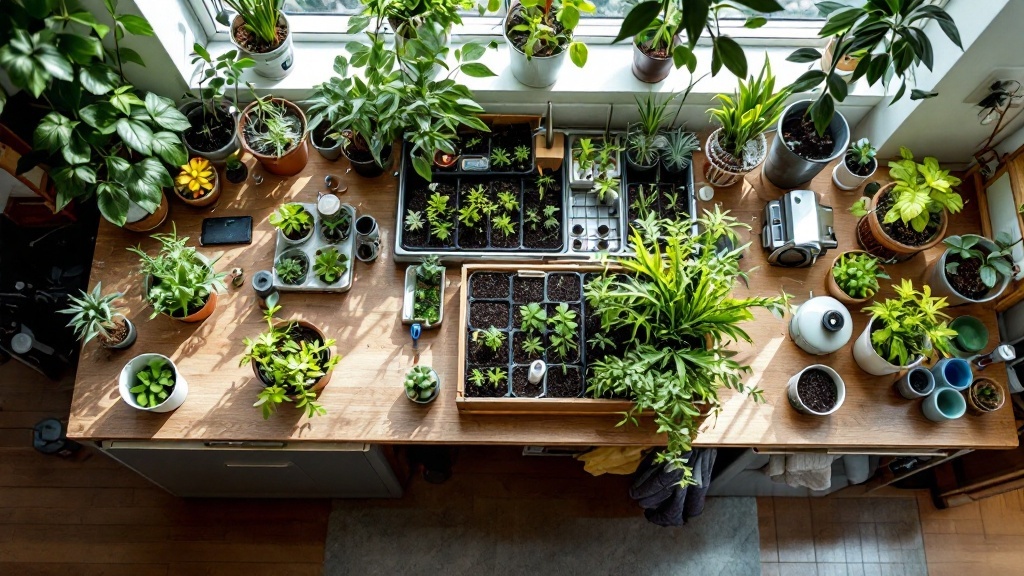
Mineral Magic: Vermiculite, Perlite, and Pumice Combinations
The mineral components of your seed starting medium act as the architecture that determines how water, air, and roots interact. Understanding how to combine these minerals can transform your germination rates.
Practical Implementation:
- Vermiculite (water retention): Holds moisture while remaining light; ideal ratio 10-30% of mix.
- Perlite (aeration): Creates air pockets and drainage; ideal ratio 10-30% of mix.
- Pumice (stability): Provides structure and long-term porosity; ideal ratio 5-15% of mix.
- Create custom blends based on seed types:
- Moisture-loving seeds: Higher vermiculite ratio (30%)
- Drought-tolerant seeds: Higher perlite ratio (30%)
- Long-growing seedlings: Add pumice (15%) for stability
Difficulty: Moderate | Time: 15 minutes | Space: Small
Pro Tip: I keep separate containers of each mineral component on hand so I can adjust my mix on the fly for different plant families or changing seasons.
Mineral Components Troubleshooting:
| Problem | Symptoms | Solution |
|---|---|---|
| Too much drainage | Dries out too quickly | Increase vermiculite ratio |
| Poor aeration | Stays soggy, slow growth | Increase perlite ratio |
| Medium compacting | Decreased growth over time | Add more pumice for structure |
| Brought to you by rootedurbanlife.com | ||
Living Mediums: Harnessing Beneficial Microorganisms
Traditional sterilized mediums lack the beneficial microorganisms that help plants thrive. Incorporating carefully selected living components can create a protective environment that suppresses pathogens naturally.
Practical Implementation:
- Source high-quality worm castings from trusted suppliers (5-10% of total mix).
- Consider adding mycorrhizal fungi inoculants specifically formulated for seedlings.
- Brew compost tea to introduce beneficial bacteria (use to moisten medium before planting).
- Create a microbial-rich layer at the bottom of seed trays to encourage root colonization.
- Maintain temperatures between 65-75°F to support microbial activity.
Difficulty: Moderate | Time: Varies | Space: Small
Pro Tip: I’ve found that adding just 5% high-quality, screened worm castings to my seed starting mix significantly reduces damping off disease without risking the nitrogen overload that can come from higher concentrations.
Living Medium Benefits by Seed Type:
| Seed Type | Recommended Microbial Addition | Expected Benefit |
|---|---|---|
| Brassicas | Trichoderma fungi | Suppresses clubroot |
| Nightshades | Mycorrhizal fungi | Improves nutrient uptake |
| Legumes | Rhizobium bacteria | Enhances nitrogen fixation |
| Cucurbits | Bacillus bacteria | Prevents root rot |
| Brought to you by rootedurbanlife.com | ||
Essential Tool: Pure worm castings from a reputable source provide a concentrated source of beneficial microorganisms without weed seeds.
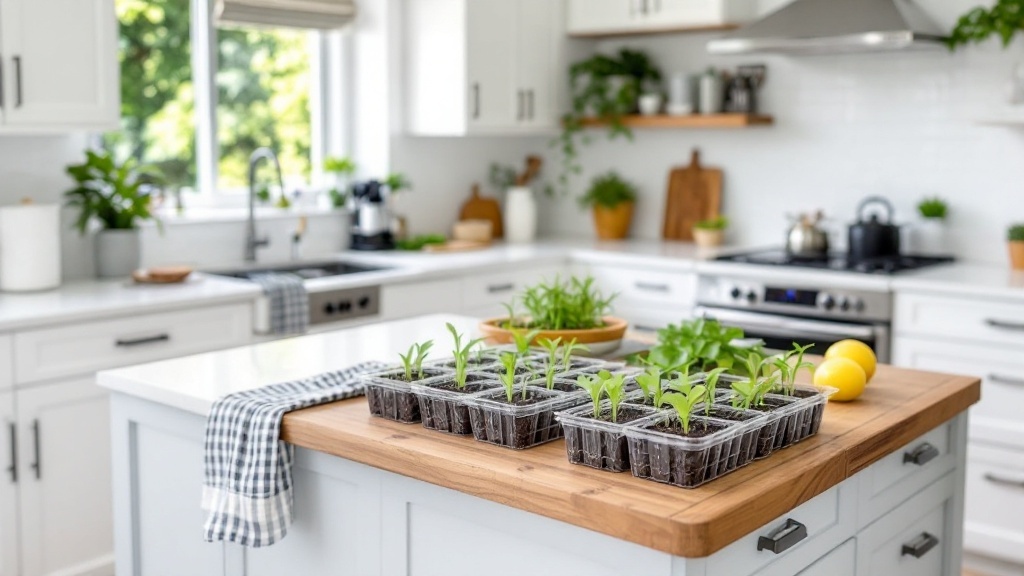
Upcycled Options: Household Items That Make Excellent Growing Mediums
Many common household items can be transformed into excellent growing mediums, often outperforming commercial products while reducing your environmental footprint and gardening budget.
Practical Implementation:
- Coffee grounds (rinsed and dried): Add up to 20% to increase water retention and add slight acidity.
- Crushed eggshells (baked and pulverized): Incorporate 5% for calcium and drainage.
- Shredded paper (non-glossy): Soak, blend, and mix at 10-15% for structure.
- Used tea leaves (dried): Add 5-10% for moisture retention and gentle nutrients.
- Rice hulls (if available): Incorporate 10-20% as a sustainable perlite alternative.
Difficulty: Easy | Time: 30 minutes | Space: Small
Pro Tip: I keep a dedicated container in my kitchen for collecting coffee grounds and eggshells. After a week of collection, I process them all at once, creating enough medium components for several seed-starting sessions.
Upcycled Medium Safety Checklist:
- Ensure all materials are free from harmful chemicals
- Process appropriately (rinse coffee grounds, bake eggshells at 200°F for 30 minutes)
- Use in appropriate ratios (never more than 20% of total mix)
- Monitor pH if using acidic components like coffee grounds
- Avoid glossy paper, which may contain heavy metals
Essential Tool: Precise measurements ensure your upcycled components are used in the correct proportions for optimal growth.
Medium Matching: Pairing Plants with Their Ideal Environment
Not all seeds have the same requirements for successful germination. Creating custom mediums for specific plant families can dramatically improve your success rates.
Practical Implementation:
- For tiny seeds (lettuce, petunias): Fine-textured mix with 30% vermiculite for surface moisture.
- For moisture-loving seeds (celery, parsley): Coir-dominant mix (70%) with 20% vermiculite.
- For rot-prone seeds (peppers, eggplant): Well-draining mix with 30% perlite and added mycorrhizae.
- For large seeds (squash, beans): Coarser mix with 20% pumice for root development.
- For long-term seedlings (tomatoes, peppers): Structured mix with 15% worm castings for sustained nutrition.
Difficulty: Moderate | Time: Varies | Space: Medium
Pro Tip: I create a simple chart each season showing which medium I used for each seed type and the results. This documentation has helped me refine my mixes over time for consistently better germination rates.
Plant Family Medium Matching Chart:
| Plant Family | Ideal Medium Composition | Key Benefits | ||||||||||||||||||
|---|---|---|---|---|---|---|---|---|---|---|---|---|---|---|---|---|---|---|---|---|
| Solanaceae (tomatoes, peppers) | 50% coir, 20% perlite, 15% vermiculite, 15% worm castings | Balanced drainage and nutrition | ||||||||||||||||||
| Brassicaceae (cabbage, broccoli) | 60% coir, 20% perlite, 10% vermiculite, 10% compost | Disease resistance, cool moisture | ||||||||||||||||||
| Asteraceae (lettuce, marigolds) | 50% coir, 30% vermiculite, 10% perlite, 10% fine compost | Surface moisture for small seeds | ||||||||||||||||||
| Problem | Symptoms | Solution |
|---|---|---|
| Hydrophobic coir | Water beads up and runs off | Add a drop of mild soap to water; thoroughly remix medium |
| Salt buildup | White crust on medium surface | Leach medium with clean water; reduce fertilizer |
| Algae growth | Green film on medium surface | Increase air circulation; reduce watering frequency |
| Fungus gnats | Small flying insects around trays | Add thin layer of coarse sand on medium surface; use sticky traps |
| Mold development | White or gray fuzzy growth | Increase air flow; remove affected areas; sprinkle cinnamon |
| Brought to you by rootedurbanlife.com | ||
Prevention Tips:
- Always use clean containers and tools
- Allow medium surface to dry slightly between waterings
- Maintain good air circulation around seedling trays
- Use bottom watering techniques when possible
- Store unused medium components in sealed containers
Recovery Strategies:
- For overwatered seedlings: Move to fresh, drier medium immediately
- For nutrient deficiencies: Apply half-strength organic liquid fertilizer
- For mold issues: Remove affected seedlings and medium, apply cinnamon to remaining areas
- For poor germination: Check medium temperature and moisture levels, adjust accordingly
Frequently Asked Questions
Q: Can I reuse alternative growing mediums?
A: Yes, with proper sterilization. Bake used coir and mineral components in your oven at 180°F for 30 minutes, then remix with fresh components. I avoid reusing medium from diseased plants.
Q: Do I need to add fertilizer to these alternative mediums?
A: Most seedlings don’t need additional fertilizer until they develop their first true leaves. At that point, apply a half-strength organic liquid fertilizer once weekly.
Q: How do these alternative mediums perform in self-watering systems?
A: Exceptionally well! Coir-based mixes with appropriate mineral components wick moisture perfectly in self-watering setups. Adjust perlite ratios higher (30%) for better wicking action.
Q: Are these mediums suitable for direct transplanting?
A: Absolutely. Seedlings grown in these alternative mediums typically develop stronger root systems that transplant with less shock than those grown in traditional soil.
Q: How long can I store premixed growing medium?
A: Properly stored in airtight containers in a cool, dry place, these mixes remain viable for 6-12 months. Living components like worm castings are best added just before use.
Next Steps On your Gardening Journey
Now that you’ve discovered the world of alternative seed starting mediums, expand your indoor gardening expertise with these related skills:
- Transform Kitchen Waste Into Garden Gold (Even in the Smallest Space!)
- Transform Your Garden with Raised Beds: Grow More, Work Less
- Discover the Easiest Way to Grow Your Own Herbs Without a Backyard!
As spring approaches, prepare to experiment with different medium combinations for summer crops, or explore how these same principles can be applied to starting fall garden seeds in summer.
Recommended Tools & Resources
Essential Components:
- Horticultural Perlite – I prefer medium grade for most applications; creates perfect aeration
- Vermiculite – Holds moisture at the surface for tiny seeds; I use this in almost every mix
- Medium Mixing Tub with Lid – Makes mixing and storage clean and simple
The journey from seed to seedling is perhaps the most critical phase in a plant’s life, and the growing medium you choose creates the foundation for success or failure. By moving beyond traditional soil to these innovative alternatives, you’re not just starting seeds—you’re creating ideal microenvironments tailored to each plant’s needs.
Take your first step today by gathering materials for a basic coir-based mix, and experience the difference in germination rates, seedling vigor, and overall success. Your indoor seed starting will never be the same!
What alternative growing medium are you most excited to try this season? Share your experiments and results in the comments below!

